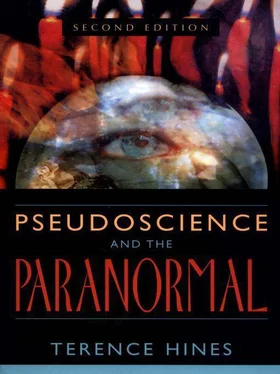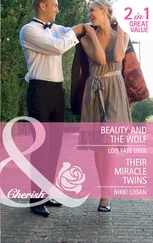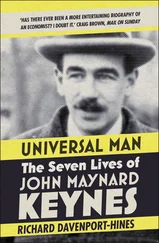The Hélène Smith case illustrates two important points. First, there is a striking similarity between the behavior of a medium in a true trance state and the individual with multiple personalities. In the latter, more than one personality is found in the same body. One personality will be in control at one time, while another personality will emerge to take control at other times. There may be several different personalities that may be strikingly different in their moods, temperaments, and interests. Some of the personalities may not be aware of the others, while some will be aware that others exist. Individuals suffering from this disorder do not have to go into a trance for the different personalities to emerge.
The second point illustrated by the Smith case is that other manifestations of the dissociative state exist than simply speaking as if a different personality is in control. Smith also wrote while in her trances, allegedly under the guidance of the spirit control. This is known as automatic writing; it can be produced by some individuals who are not in a trance state. The arm, in such individuals, seems to write “on its own” and it is easy to understand how the feeling could develop that the arm was “possessed,” perhaps by a spirit of the dead. In fact, automatic writing is an example of a milder form of dissociative state.
Phenomena that took place at seances run by professional mediums were sometimes extremely spectacular and were not so easily put to the test as table moving. For example, Alfred Russel Wallace, a codiscoverer with Charles Darwin of the principle of natural selection, reported (Wallace 1878, quoted in Hyman 1985) that at a seance he attended with five close friends, the entire seance table became covered with “fresh flowers and ferns” while the sitters carefully watched. The flora appeared from nowhere, and “the first thing that struck us all was their extreme freshness and beauty. The next that they were all covered, especially the ferns, with a delicate dew” (p. 20). Clearly, unconscious muscular exertions will not do as an explanation here. Thousands of other individuals were deeply affected by similar spectacular personal experiences with mediums that convinced them beyond any doubt that spiritualism was real.
One prominent scientist who was convinced of the reality of spiritualistic phenomena on the basis of the events he observed at seances was the American chemist Robert Hare. To further test the reality of spirit communication, Hare designed an experiment in which tipping and movement of a table at which a medium sat caused a pointer to indicate letters on a wheel that was out of sight of the medium. Hare would ask the medium questions, the table would move, and the answer to the questions would be spelled out. The results were very impressive, as shown in the following quotation from Hyman’s (1985a) description of Hare’s experiment, reported first in Hare (1855):
Hare then began by asking if any spirits were present to indicate so by causing the letter Y to be under the pointer. Immediately the pointer moved to the letter Y. Hare next asked, “Will the spirit do us the favor to give the initials of his name?” The index pointed first to R and next to H. Hare immediately asked, “My honoured father?” The index pointed to Y. After a few more tests such as these, the onlookers urged that Hare admit the reality of spiritual agency. Hare must have still shown some hesitation, because the index spelled out, “Oh, my son, listen to reason!” (p. 14)
This type of report seems convincing. Highly trained scientists, some conducting complex experiments that seemed to verify their initial impressions, concluded that spirit communication was real. The evidential value of these impressions and experiments is destroyed, however, when it is revealed that mediums accomplished their seeming miracles by cheating and using illusion and sleight of hand at every possible opportunity.
Remember that the reports of what occurred at seances—the reports that convinced so many of the reality of spiritualist phenomena—were eyewitness testimony. Such testimony is unreliable even when the object of the testimony is not making conscious and skillful efforts to deceive, mislead, and distract witnesses from what is really taking place. Of course, mediums were doing just that, so eyewitness reports of what happened at seances, given by individuals totally unfamiliar with the deceptive techniques used, are even less reliable than most eyewitness reports.
The literature on spiritualism is replete with stories of mediums being caught red-handed during a seance, cheating to produce some wonder or another. One of the greatest exposers of mediumistic fraud was the famous magician and escape artist Harry Houdini, who wrote of his experiences in his classic 1924 book, A Magician among the Spirits. Here Houdini described in detail the methods used by many mediums. Brandon (1983) and Dunninger (1967) also describe some of the techniques that have been used by mediums to produce their effects.
Houdini deserves special mention here. Perhaps more than any other single person, he was responsible for the decline in public acceptance of spiritualistic claims. The public recognized both his name and his expertise as a magician and uncoverer of fraudulent mediums. That he never found a single genuine medium was very powerful evidence against spiritualism. Houdini himself was a skeptic who badly wanted to be able to believe, but the constant string of frauds he saw prevented him from doing so. His desire was to communicate with the spirit of his mother, whom he loved (Brandon 1983). Even in death, Houdini continued to expose the sham of spiritualism. Before he died suddenly in 1926 at the age of fifty-two, Houdini had arranged a secret code with his wife that he would transmit from the spirit world. If she received it, this would prove that the medium giving the code was truly in contact with Houdini’s spirit. In spite of years of searching, no medium was ever able to give the code, although many claimed to be in contact with the great magician.
Some mediums confessed their fraud. An apparently very accomplished medium wrote the anonymous Confessions of a Medium in 1882. Margaret Fox herself confessed, in 1888 (the confession is reprinted in Kurtz 1985b), that the origins of spiritualism were fraudulent. The mysterious rapping at the Fox home in 1848 had been produced by Kate and Margaret tying an apple to a string and bouncing it up and down on the floor in order to frighten their mother. Margaret Fox stated that those, and all subsequent phenomena she and her sister Kate had produced, were fraudulent.
The methods used by mediums were many and varied. At some seances seemingly disembodied voices would move about the room, responding to the medium’s or the sitters’ questions. This was easy to accomplish as seances were almost always held in the dark. An assistant of the medium, or sometimes the medium in person, completely dressed in black clothing, head covered, would move invisibly about the darkened room. This general gimmick could be adapted to have the black-clothed individual hold some bright object that would then appear to float mysteriously about the room. On more than one occasion, a skeptical sitter would spring out of his chair and grab the “spirit,” only to find that he had grabbed a very angry and embarrassed medium. Cumberland (1888/1975) reports spraying red dye in the face of the spirit and later discovering the very same dye on the face of the medium. So-called spirit photographs, in which the head or the entire form of a spirit seemed to float about the medium, were easily produced by trick photography—usually double or multiple exposures of the same plate. They seem astonishingly crude today and were easily duplicated. Some female mediums went so far as to conceal in their vagina or anus objects to be “apported” during the seance and gauzy fabric that would become “ectoplasm” during the seance. These were places that Victorian gentlemen, no matter how skeptical, were highly unlikely to ask to search.
Читать дальше












